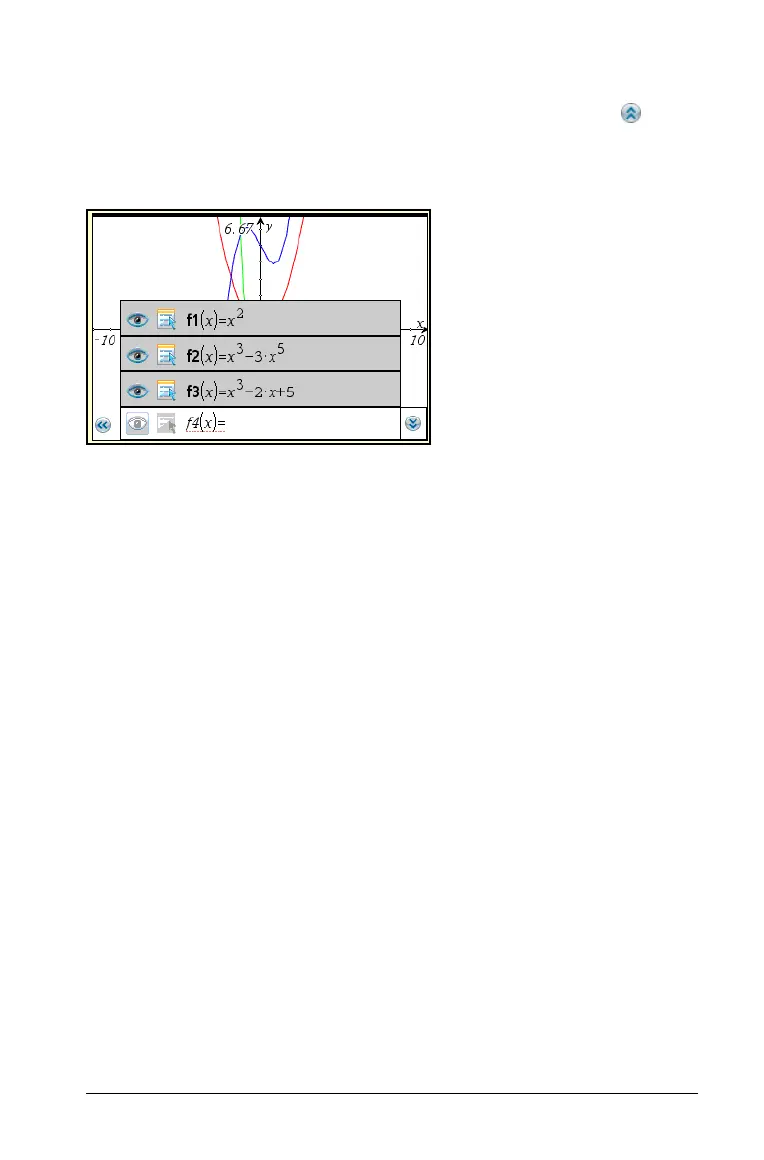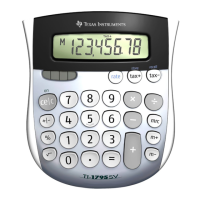Graphs & Geometry 473
Displaying relation history
Show the entry line, and then click the Function History button to
display a history of the relations typed on the entry line. The list displays
relations in the order of entry (top to bottom), with the most recent
entry closest to the entry line. Use 9 and : to move up and down the list.
Use the relation history list to edit or delete relations.
Finding points of interest
You can use the tools on the Analyze Graph menu to find a point of
interest in a specified range of a function graph. Choose a tool to find
zero, the minimum or maximum, the point of intersection, or the
derivative (dy/dx) or Integral.
Note (CAS): You can also find the point of inflection.
1. Select the point of interest on the
Analyze Graph menu. For example,
select Minimum to find the minimum point.
The icon for the selected tool displays at the top left on the work
area. Point to the icon to view a tooltip about using the selected tool.
2. Click the graph you want to search for the point of interest.
When you point to the plot, a dotted line displays for marking the
part of the graph to search for the point of interest.
Notes:
– If you are finding the derivative, click the graph at the point at
which you want to find the derivative.
– You can choose tools for finding points of interest from the
context menu. If you select the Integral tool or the Derivative tool
from the context menu with a function graph selected, that
function is used for finding the point of interest.

